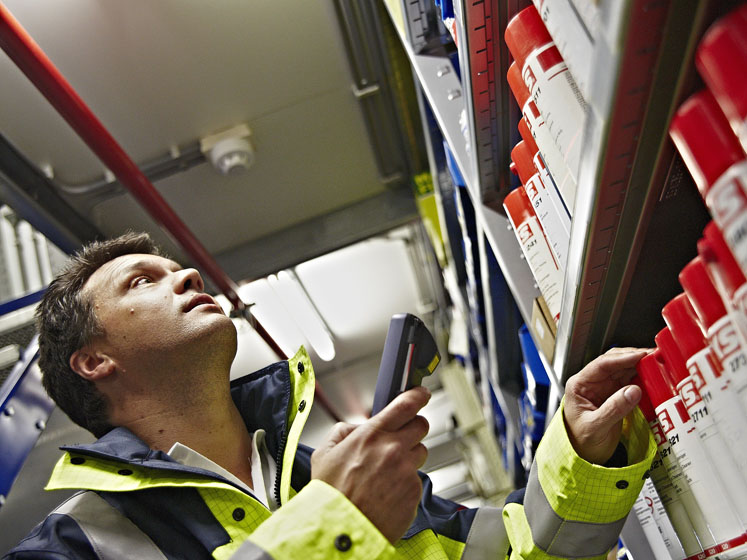When it comes to managing maintenance, repair and overhaul (MRO) products, many organisations go down the traditional route of in-house stores management. This includes ordering MRO supplies directly from manufacturers or through a distributor to then be collected from a local branch or delivered to site.
However, management of the on-site store often results in issues such as diverting resources from the main business. To avoid this, some companies engage a third-party to handle inventory management. For larger companies, a further option is available in the form of an MRO consolidator that can provide services and dedicated personnel on-site.
What is an MRO consolidator?
An MRO consolidator is a third-party that aims to consolidate and streamline MRO processes within your business. Embedding itself into the heart of your company, a good MRO consolidator integrates into your business and becomes an extension of your team.
It delivers all the benefits of an MRO distributor’s branch on your site, including high levels of customer service and year-on-year cost-saving delivery through vendor optimisation and a reduction in the purchasing and transaction costs associated with indirect supplies — all with a single point of contact for orders and customer service enquiries.
The role of an MRO consolidator
There are four main types of work that an MRO consolidator will do. These are divided into core activities, performance measurement, supplier management and other services. Core activities include product identification, order handling and expediting, as well as parts standardisation, technical support and supplier management. MRO specialists help you by proactively identifying cost-saving opportunities across these areas.
Performance measurement involves monitoring progress against agreed KPIs and objectives, including Service Level Agreements and the measurement of cost savings against achieved targets. This gives you total transparency of performance. Supplier management focuses on dealing with technical specialists, supplier engineers and regional teams, as well as supply chain partners.
There are many other services that an MRO consolidator can potentially perform, depending on client requirements. These include stores design and restructuring, providing and managing MRO e-commerce sites and online catalogues, employee training, condition monitoring and designing and implementing improvement projects. These can bring lasting benefits to your business.

Pros and cons of an MRO consolidator
There are many advantages associated with implementing an MRO consolidator onto your site, with the biggest being the saving of time and money. This factor is what draws most people into the idea of employing a service of this kind.
With the right firm, you can expect to see high-level cost savings as well as a reduction in downtime and processing. Alongside this factor, clients are also most likely to experience an increase in productivity as now company processes are streamlined.
Another very important factor is the dedicated resources you will receive on your site. Usually, you will have a specific individual or team working with you on-site. This will allow you to establish a relationship with both the company and a person who can get to know your organisation in-depth and ensure that the service is completely tailored to your needs.
Most consolidators sell based on unit cost savings and supplier reduction; but, without engineering expertise, this is short-sighted and that’s all you’ll get. If the supplier understands your processes, you’re more likely to see value creation through continuous improvement.
Although the advantages mostly outweigh the disadvantages, there’s still are a few factors you need to consider when looking to implement a service of this kind. The main one is the length of the contract. For a service of this sort, you can expect to be tied into a contract for a minimum of 3 years.
There is also the potential to damage relationships with existing suppliers who may be cut out of the supply chain by the MRO consolidator. Lastly, there is the cost of this kind of service.
Implementing an MRO consolidator
If you think this service could be potentially beneficial to your site, then follow these five steps to successful implementation.
Discussion: All good MRO consolidators should begin the process by discussing the needs of your company. Early discussions should involve which areas you might need help in, particular cost savings to be achieved or, simply, if you need a team or just a single person to work with you. These early discussions are your chance to map out time frames and budgets and to confirm if this approach is the right one for you.
Proposal and contract signing: After discussing your needs, the MRO consolidator will submit a proposal. Read this carefully and be sure to go back to the MRO consolidator with any questions. Straighten out the fine lines and ensure the MRO consolidator is going to deliver all that you’re setting out to achieve. The next step is, of course, accepting the proposal and signing the contract.
Set-up: Now that all the paperwork’s signed, the set-up process begins. Although you will play a significant role during this process, the majority of stages will be the job of your MRO consolidator.

They will need to source the right MRO specialist for your needs, either from within their organisation or externally and ensure that they have the tools necessary to do their job, from phone and laptop, through to training on your network and company policies. All other elements of the service will also be put into place.
The arrival of the MRO consolidator on-site: After all the previous steps have been completed, it’s time for your MRO consolidator to arrive on-site. This will then begin the various company onboarding and training sessions. This part of the implementation can take anywhere from a couple of days to a couple of weeks depending on the size of the site and the needs of your company.
Continuous improvement and reporting: Having an MRO consolidator on-site is often a big investment, so you want to make sure you’re seeing results. This is done through continuous reporting as well as tracking all the departments your MRO consolidator covers.
A good MRO consolidator will have a reporting service in place that includes monthly revenue meetings designed to keep your KPIs in mind. It also gives you a base to talk about other issues you might have and give you a better access point to your wider industry.
Remember, if you’re thinking of implementing an MRO service provider at your site, it’s vital to do your research. The service has got to work for you; otherwise, the kind of cost savings you’re expecting might not happen. Ensure regular communication is maintained as well as that all-important upkeep of a good relationship.




